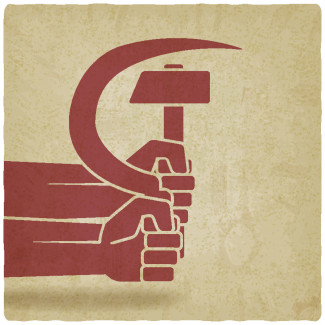
Johns Hopkins UniversityEst. 1876
America’s First Research University
Modernist Literature and Communist Ideology: A Look into Red Modernism with Mark Steven

I first started writing Red Modernism for the same reason I write most things: to work through a problem whose answer, tantalizing as it might be, just doesn’t come easily. The problem, in this case, evolved from a contradiction between my enthusiasm for certain types of modernist literature and my commitment to a certain kind of politics. To put things starkly, I’m a communist that spends way too much time reading poetry written by a fascist – namely Ezra Pound, who is the first of Red Modernism’s three major case studies, followed by William Carlos Williams and Louis Zukofsky.
My intuition, going into this book, was that even if a poet might be from the enemy camp, maybe their poetry would have other things to say about the matter. It has been argued elsewhere that there is an essential link between poetry and communism, because poets deal in language and because language is common property. I’m not entirely sure that’s the case – it’s all a bit too abstract for my liking – but there remain numerous good reasons to think the two as related, and with specifically modernist poetry there is also a relatively unique historical overlap. In short, the literary period of modernism is roughly contemporaneous with the revolutionary achievement of a socialist state in Russia and the historical sequence associated with that event.
And so it is that I found myself digging into a literary field largely defined by reactionary conservatism, seeking out traces of communist thought that might have, somehow, left its mark on the modernist landscape. What I discovered, and what this book proposes, is that numerous major concerns held by avant-garde poetry during the period we often describe as modernism were variously responsive to the politics, ideology, science, utopianism, militancy, and overall spirit of communism.
Here’s an example. T. S. Eliot’s poem of 1922, The Waste Land, includes a footnote that alludes via literary anachronism to the Russian Revolution of 1917. Though it might seem overreaching to suggest that communism helped shape the poem’s sense of European geography, that is precisely the suggestion its author – a conservative banker – would make five years later. “For the Russian Revolution has made men conscious of the position of Western Europe,” recalled Eliot in 1927. “And this awareness seems to be giving rise to a new European consciousness. It is a hopeful sign.”
Here’s another, also from 1922. In James Joyce’s Ulysses, when a steaming drunk Leopold Bloom decries the unnamed industrialists of Dublin’s Nighttown, he does so using not only the rhetoric of Marxism but a direct allusion to one of communism’s founding documents. “Machines is their cry, their chimera, their panacea,” he intones. “Laboursaving apparatuses, supplanters, bugbears, manufactured monsters for mutual murder, hideous hobgoblins produced by a horde of capitalistic lusts upon our prostituted labour.” As is well known, the first English translation of The Communist Manifesto said nothing about stalking specters but instead referred to its eponymous ideology as a “frightful hobgoblin” sprung from the recently industrialized forces of production.
Just as Eliot was looking to socialist Russia, Joyce had been reading Marx and Engels. 1922 irradiated by 1917. Connections like these, unlikely and counterintuitive as they often seem, abound throughout the canon of modernist literature, and especially modernist literature from the United States.
My aim in writing Red Modernism has been to demonstrate that modernist literary production defined itself in relation to communism to an extent that requires any serious historical account of modernism to reckon with that contemporaneous phenomenon. One of the more stale clichés of our cultural situation is the left-wing killjoy, a curmudgeon that ruins all manner of fun with unforgiving political censure. My motivations are similar to those of the killjoy, but structurally obverse and perhaps even a little more extreme: it’s not only that I want to disallow the political right from claiming great literature as their own, I also want to show, concretely, that so much of what is great about literature can be indexed to its relationship with communism. In other words, I want to plant a gigantic red flag atop modernism’s literary monuments.
Mark Steven is a research fellow at the Centre for Modernism Studies in Australia, based at the University of New South Wales. He is also the author of Red Modernism: American Poetry and the Spirit of Communism.


